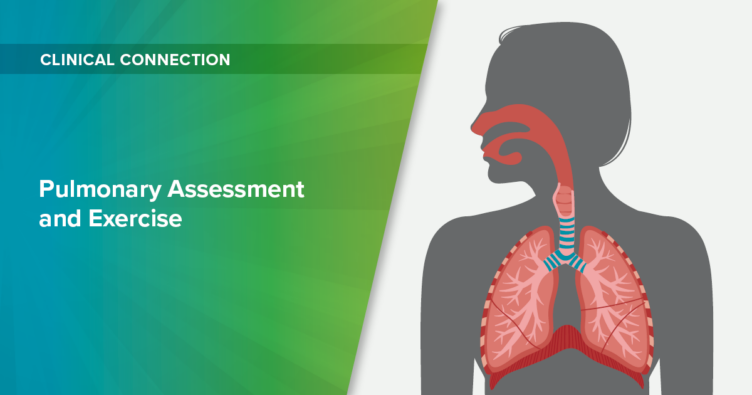Pulmonary Assessment and Exercise

Pulmonary conditions are prevalent in adults and lead to disability and death. In the United States, COVID and chronic lower respiratory disease are the 3rd and 6th leading causes of death, respectively. (CDC, 2021). Respiratory disease consistently has been in the top 6 causes of death for greater than a decade. Properly assessing individuals with pulmonary conditions and treating their breathing-related impairments will improve their functional ability and quality of life.
Knowing if the pulmonary condition results in a restrictive or obstructive pattern will help identify the best exercise approach. Pulmonary Assessment is conducted with a comprehensive symptom analysis along with spirometry testing. Pulmonary function measures, including FVC, FEV1, and flow-volume loops help differentiate obstructive and restrictive lung disease.
OBSTRUCTIVE PATTERN
Description:
Hyper-inflated lungs (dilation of alveoli and air trapping) with inflamed bronchi and mucus
Examples: COPD, Bronchitis, Asthma,
Emphysema

FVC1/FVC ratio: Decreased
FVC: Normal
FEF: Reduced at 25-75%;
“scooped out” flow-volume loop
Recommended Breathing Exercises
- Limited ability to exhale fully/forcefully = Controlled/Forced Expiration
- Abnormal inhalation/exhalation ratio =
Rhythmical Breathing - Need to clear throat/lungs =
Huff Cough
RESTRICTIVE PATTERN
Description:
Reduced lung volume
(scarring between alveoli)
Examples: Pulmonary fibrosis, Pneumonia, ARDS, COVID

FVC1/FVC ratio: Normal
FVC: Decreased
FEF & FIF: Reduced
Recommended Breathing Exercises
- Limited ability to inhale =
Deep Inspiration - Limited ability to exhale =
Forced Expiration - Shortened inhalation/exhalation duration = Rhythmical Breathing
- May need to clear throat/lungs =
Huff Cough
OmniFlow® Breathing Therapy Biofeedback System incorporates inspiratory and expiratory breathing exercise to improve respiratory muscle performance and patient functional outcomes.

Deep inhalation
(Diamond Mine)

Forced expiration
(Prehistoric Contest)

Controlled expiration
(Sail Away)

Rhythmical breathing
(Starry Road)

ACBT/Huffing technique
(The Dandelion)
Pulmonary Function Measures
- Forced Vital Capacity (FVC) = total amount of air individual can breathe out.
- Forced Expiratory Volume1 (FEV1) = amount of air an individual can force out of the lungs in 1 second.
- FEV1/FVC ratio = amount of air forced out in one second divided by the total amount of air individual can breathe out.
- Forced Expiratory Flow (FEF) = rate of air being expelled often divided into 25%, 50%, & 75% of the forced expiratory volume.
- Forced Inspiratory Flow (FIF) = rate of air being inhaled often divided into 25%, 50%, & 75% of the forced inspiratory volume.
Author:
Andreé Akst, MPT, CEEAA, NASM-CES, Clinical Services Content Specialist
Latest Updates
Subscribe to stay up-to-date on our latest posts.



